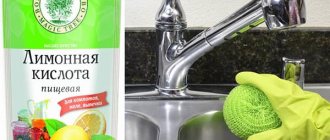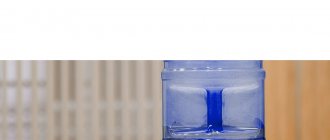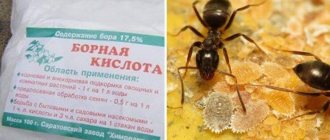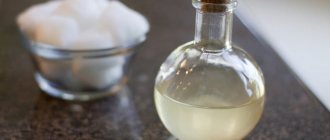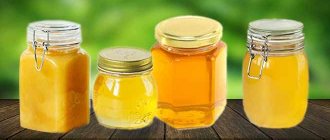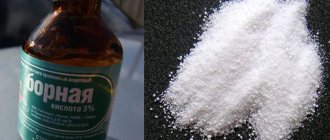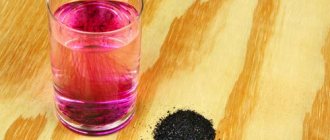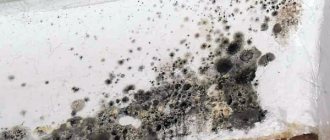We all deal with chrome surfaces in our bathroom. These include various kinds of accessories, lamps, shower bars, flush keys, mirror elements, and of course faucets. These are the ones that need cleaning and care more often than others, due to constant interaction with water. Droplets of water, settling on the surface, form a limescale deposit, sometimes even with rusty stains. The soap solution doesn't leave the best picture either.
The question naturally arises - how to properly and, most importantly, how to clean faucets from limescale?
The shiny surface of the faucet has turned black
Hello!
After using the Silit cleaning product (Composition: up to 15% hydrochloric acid), black stains appeared on the surface of the faucet. Is there any way to fix this? vfhc wrote: “Silit” (Composition: up to 15% hydrochloric acid
looks like a hellish mixture for covering, just soap and water and rinse clean
Silite is usually harmless, strange. What brand is Smesak? I use pink adrilan - also with acid, but there is no damage. Try it, maybe it will wash off?
Maybe the cleaning solution was overexposed? A long time ago, a friend of mine decided to wash a gas stove (comfort) made of stainless steel, poured in the cleaning muck and didn’t wash it off right away, but left it for a while and forgot... when I remembered, the whole surface was covered in stains, something like yours and not at all washed off. It looks like you acid-etched the surface.
2 sansvar Exactly, there was something similar.
Mixer. The coating is probably really bad. The mixer is brand new - just installed. The bathtub has the same problem, only less so. Where does this go now? I want to try to give it somewhere so that the coating can be reapplied. Although it might be easier to buy new ones.
I washed both osgard faucets in my bathroom with silitol, no problem. I kept it on for about 2 minutes. I applied it to both of them, while the first one was washed off, the second one waited.
Judging by what I found on the Internet, the mixers are not the cheapest and should not be completely full.
ps, although it was 2 minutes, I probably missed it. I applied it to both, the first one began to wash off immediately, the second immediately after the first.
What if you rub it with an eraser? Well, not particularly abrasive, soft. Although I have seen chrome with such an effect, it was a little less, but it went away over time.
My husband went through the new faucet with a “toilet duckling” (5-15% hydrochloric acid). Now he is covered in black stains. What to do?
Tayna wrote: What should I do?
Either change or score.
Since there is no photo, let’s try to understand what “blackened” means? What if it’s like this? Then congratulations - you can blacken it and sell it) like Louis Vuitton! And if the coating came off less aesthetically, then it was a faucet with the appearance of a coating.
The same thing happened to me. After treating the faucet with Mr. Muscle scale and lime remover, black marks remained on the faucet. I also left it for a few minutes, forgot, and when I washed off the product I found traces of black stains. I tried to win with folk remedies: tooth powder with a mixture of hydrogen peroxide, abrasive cleaning products with some kind of microgranules, etc. One thing helped: A grinding felt wheel with GOI paste.
Yurchik wrote: I washed both osgard faucets in my bathroom with silitol, no problem
Osgard is rarely seen on sale. Now there are leftovers in RIO on Dmitrovskoye Shosse. I installed it in my kitchen in 2008 and have never done anything with it. When five years of warranty have passed, the supplier promised to exchange it for a new one, free of charge. There is only one thing BUT, the supplier (Laverna) from Moscow left (
This kind of “eating” of chromium is a common picture when people, led by advertising, uncontrollably use evil chemistry, being distracted for a few extra minutes. This kills almost any chromium. products. Chinese, etc. They just peel off much better. You need to take care of it more often, without resorting to strong chemicals, because... No one knows for sure what they sometimes mix in there. By the way, I myself several times filled neglected mixers (dismantled) for 10-20 minutes with an anti-scale solution (citric acid), and everything was as good as new, no black stains. This is like “liquid plumbers” for sewerage - a favorite topic for informal mockery at sites. So, my aunt poured the product into the jacuzzi, she says she poured it for 6 years - and everything was fine, but suddenly it couldn’t stand it.
But here is something typical on the topic, for example, on the Apollo cockpit.
What not to do
The chrome surface of faucets is easy to damage, which means you need to be careful when choosing cleaners.
- Do not use metal brushes, scrapers, or hard sponges for cleaning. Even if it seems that they will cope with removing deposits much faster.
- Abrasive or chlorine-containing products, concentrated acids are also not the best choice. They will cope with plaque perfectly, but will leave behind dark spots and dots. As a rule, the manufacturer's label indicates that cleaning chrome surfaces with them is prohibited.
It is better to clean faucets made of bronze, brass or copper with special household chemicals.
Limescale deposits on the faucet in the bathroom or kitchen can be successfully removed using available means: vinegar, soda, citric acid, laundry soap, salt or Coca-Cola. It is not recommended to exceed the exposure time of cleaners.
- Prepare a solution of table vinegar and water in a ratio of 1:2. Spray from a spray bottle or apply with a sponge to the tap. Depending on the degree of contamination, do not rinse for 30-60 minutes. Afterwards rinse with clean water. Wipe dry.
- If there is a thick layer of deposits, a vinegar compress will be useful (1 part vinegar 9% 2 parts water). Soak a cloth in it and wrap the faucet. Leave for 10-50 minutes. The time depends on the thickness of the plaque. Rinse off. The method is convenient to use in hard-to-reach areas.
- Dilute grated shavings of 72% laundry soap with water to form sour cream. Apply to stains for half an hour. Rinse off. For greater effectiveness, the mixture can be prepared with the addition of baking soda.
- Lemon juice will help remove a thin layer of limescale on the faucet. Use a fresh cut of citrus to rub off dirt. Wash off after 15-20 minutes. You can replace it with an aqueous solution of citric acid (10 g per 500 ml of warm water).
- Take a little salt and dilute it with water until it becomes mushy. Apply to contaminated areas. Do not rub, otherwise micro-scratches will appear on the surface of the faucet, which will only make cleaning more difficult each time. Rinse everything after 15-20 minutes.
- The cleaning properties of Coca-Cola have long been no longer questioned. Soak a rag in a warm drink and wrap the problem areas. Leave it like this for 15-30 minutes. Remove the bandage and wash off.
We suggest you familiarize yourself with how to clean a chrome faucet.
After using any of the products, the faucet is thoroughly washed and wiped dry. During cleaning work, do not neglect protective equipment (gloves, respiratory masks). If vinegar was used as a cleaner, be sure to ventilate the room.
This may come in handy: How to clean bathroom tile grout.
For mild plaque, it is not at all necessary to purchase aggressive household chemicals. You can clean the faucet inside and out without any problems using folk remedies, most of which everyone has in their kitchen.
Coca Cola
This is not only a non-alcoholic sweet drink. Many people don’t even realize that ordinary cola can remove even stubborn stains thanks to the acids contained in this dark drink. To clean the mixer and tap axle boxes with cola, do the following:
- Wet a clean cloth with the drink.
- Apply for half an hour to the plaque-covered area of the mixer element.
- After the allotted time, remove the rag and rinse in water.
- Dry the parts with a dry cloth.
Maslodetskoye
Ordinary baby oil will help remove mineral deposits, soap scum and traces of grease from the surface of the faucet:
- Wet a cloth in water.
- Apply oil to damp cloth.
- Rub the problematic area of the faucet with a cloth.
- Rinse the part in water.
- Rub the treated area vigorously with a suede cloth to add shine.
Soap
72% laundry soap contains chemical ingredients that can dissolve limescale deposits. To clean the faucet using this method, follow the instructions below:
- Grate the soap into the shavings using a grater.
- Dissolve the shavings in hot water until a paste-like substance forms.
- Add a little soda.
- Apply the solution to a damp cloth and use gentle movements to treat the problem areas of the faucet.
- Apply the composition to the surface and leave for an hour.
- Rinse the treated elements with clean water.
Lemon acid
For this method, you can use either store-bought citric acid powder or the juice of the citrus fruits themselves:
- Apply acid or lemon juice to a rag previously soaked in warm water.
- Rub the problem areas of the faucet.
- Wait 10-15 minutes for the acid to dissolve the mineral layer.
- Rinse in clean water and dry with paper towels.
Table vinegar
Due to its aggressiveness, this ingredient is able to remove plaque in the shortest possible time. Procedure:
- Mix water and vinegar in equal parts.
- Apply the solution to a clean damp cloth.
- Treat the mixer parts and leave without rinsing for 5-10 minutes.
- Rinse the parts in water and dry with a dry cloth.
Baking soda
Another effective way to descale a faucet is with baking soda:
- Make a paste by mixing baking soda and warm water.
- Apply the resulting consistency to problem areas of the mixer.
- Wait 1-1.5 hours for the solution to work.
- Remove any remaining product with a damp cloth.
Toothpaste
Apply toothpaste to an old toothbrush and gently work through the faucet. To enhance the effect, you can leave the paste on for a while and then rinse it off.
Due to the fact that salt granules can scratch chrome parts, it is better to use this method to remove plaque on internal elements - valve axle boxes, switches, etc.
Toothpicks
Using this method, you can remove plaque on the faucet gander without fear of scratching it. To do this, take a wooden toothpick by both ends and move it along the part, thereby removing a layer of plaque like a plane.
We suggest you consider home remedies that will help you remove limescale from your faucet with your own hands, easily and simply, without harming either you or the faucet.
Laundry soap
To wash off limescale deposits, you can often use ordinary laundry soap, which is found in every home, as it has a disinfectant effect. Experts even recommend buying 72% soap, since it is several times more effective than what we are used to using. To remove dirt, wipe the chrome surface with a bar of soap and rinse with warm water.
For some reason, most people mistakenly believe that using soda can only remove fumes, but in fact this is not at all the case. Soda-based products help effectively combat limescale stains on the tap.
To quickly clean faucets and remove limescale deposits, use regular vinegar. It should be diluted with water, one measure of vinegar and two water, and then soak a cleaning cloth in this solution. Next, wipe the plumbing fixtures with the mixture, and after 15 minutes, rinse the tap with plain water and wipe dry.
Lemon (acid)
When fighting limescale, use fresh lemon juice or citric acid, which is available at any grocery store. Cleaning limescale contamination is carried out in several steps:
- Apply acid to a cloth.
- Wipe the contaminated surface.
- Rinse off any remaining product with heated water.
As you can see, it is not difficult and will not take much time.
Coca Cola
You can remove dirty deposits from the surface with any Coca-Cola drink. To do this, take a regular rag and soak it well in the sweet liquid, and then throw it over the dirty tap. After 30 minutes, remove the cloth and rinse the surface with water. If any traces of plaque remain, repeat the procedure.
Soap for children
Toothpick
To remove limescale from a faucet, you can even use familiar toothpicks! They definitely exist in every home. To remove plaque, carefully grasp the toothpick by both edges with your fingers, and then carefully apply it to the surface and pull it along. This way, all salt deposits will be quickly removed, and there will be no need to use additional cleaning agents.
It's no secret that salt is an abrasive material, and therefore, following the advice that abrasives should not be used for cleaning, many do not think that it is salt that can be used in the fight against limescale. But if you use it in small quantities, it will do a great job cleaning the faucet.
Baking soda
We suggest you read: How to preserve cranberries without freezing
Baking soda is a universal remedy that helps in the fight against a huge amount of pollution. The principle of use is the same as with regular soda - mix with water to form a paste, and then treat the surface with it. The difference is that this mixture should be on the tap for at least 40 minutes, preferably 60, and then the tap should be wiped and polished with a dry cloth.
Tooth powders and pastes
If there is very little limescale on the tap, you can use tooth powder or paste. Apply the product to an old toothbrush, and then gently wipe away the plaque. If it is not possible to remove the contamination in one go, the procedure should be repeated.
Baby oils
And it is this last method that is used least often. Few people know, but baby oil is very effective against salt deposits, scale, and plaque. To do this, wipe the contaminated areas with a cloth soaked in oil. After this, wipe the residue with a napkin, rinse with water and wipe dry with a clean cloth.
How and with what to clean the faucet. We study means and methods
Every housewife dreams of an ideal home - cozy furniture, modern home appliances, beautiful dishes and sparkling taps in the kitchen and bathroom. Agree, even the most expensive renovation in the bathroom or kitchen will simply fade if, against the background of the original plumbing fixtures and elegant utensils, there are faucets covered with unsightly lime stains. How to clean your bathroom faucet and what products can help your faucet look like it came straight from the store? You will find answers to these questions in our article.
How to clean an aerator
There are also special cleaning products that are used to clean household appliances and plumbing fixtures.
Cleansing mixtures
Among the most effective cleaning products, we will highlight several that are combined into the TOP 5.
They can be used to clean gas stoves, ovens, and washbasin taps. The liquid contains special components that help deal with salt deposits on any surface; you just need to apply the gel to the tap, and then rub it with a cloth and rinse everything with clean water.
This cleaning type composition helps to remove not only traces of lime, but also other, more serious contaminants. It is often used to keep the kitchen and bathroom clean. Use the product at least once a month to prevent plaque from appearing on the tap.
To remove limescale from the faucet, as well as get rid of dirt and even rust, use Sanox, which comes in gel form. It has disinfecting properties and also helps remove bacteria and even intestinal pathogens from the surface. When using the product, you should squeeze it in small quantities onto the tap, rub it with a sponge, and then you can wash it all off.
This is a slightly different product that comes in the form of a spray. It should be sprayed evenly onto the plaque, and then the treated surface should be wiped with a damp cloth and the “wow” effect is guaranteed.
Polishes
To polish chrome plating, use special polishes.
After some time, the taps begin to lose their former shine, and it is quite natural to want to restore it. This can be done if you use a product such as Domax. This gel is very effective, since after its use a protective film is formed on the surface from grease, scale and other contaminants.
For polishing chrome coatings, most people chose polish in the form of Indesit gel. The advantages of the product include the fact that it helps to quickly dissolve fatty deposits and salt particles, as well as the fact that the composition does not contain caustic elements.
If the water flow has become uneven, the stream hits in different directions, and the pressure has become quiet, then it’s time to clean the mesh filter on the tap.
- Step 1. First, you need to remove the aerator. Ideally, the lock is unscrewed with a special key. At home, if you don’t have the latter, you can use pliers, but first wrap the aerator with a piece of cloth so as not to scratch it.
- Step 2. If you cannot remove the structure due to plaque on the threads, then you can soften it in two ways. The first is to moisten a cloth in an aqueous solution of vinegar (20 ml of product per 50 ml of water) and tie on top for 20-30 minutes. Diluted citric acid with water in a proportion of 5 g per 250 ml will also cope with this, only the exposure time is halved to 10-15 minutes.
Or the second option is to pour the prepared vinegar solution into a plastic bag (previously checked for integrity). Place it over the aerator so that the cleaning liquid completely covers the desired area and secure with an elastic band. After 20-30 minutes, thread mobility is usually restored. You can also use a lemon solution, but it is recommended to leave it for no more than 15 minutes.
In one of the cleaning solutions with soda, lemon or vinegar, rinse the mesh filter, and the rubber band only under running water.
If traditional methods are in doubt or have proven ineffective, then household chemicals will help clean the taps in the bathroom or kitchen. But you cannot use for this purpose products with aggressive components that are used to clean toilets. The choice must be made in favor of special compounds suitable for removing limescale on faucets.
Preparation of the solution
There is vinegar on every housewife's kitchen shelf. Apple, table, essence. The only difference is in the percentage component. The standard solution is usually prepared 1 to 1. As already mentioned, the difference is only in percentage. If you decide to prepare a cleaning solution from essence, then the proportions should be as follows: 1 part essence and 14 parts water. We prepared a solution, treated the surface, cleaned it with a sponge, washed it off with water, and wiped it with a cloth. Simple and fast!
If you don’t have citric acid at home, you can buy it at any store or kiosk. To clean the faucet, prepare a solution: 4 tablespoons of citric acid per 1 liter of water. Apply the solution to the surface, leave for 2 hours, rinse, and wipe with a cloth. Or pour citric acid onto a damp cloth, wipe the surface, wait a few minutes, wash and wipe dry. Ready.
We suggest you familiarize yourself with what a blender is used for
Cleaning with soda
Grandma's old way. Today, not every housewife remembers the amazing cleaning properties of laundry soap. And there are a lot of them. Here's one of them. Dip a piece of laundry soap into a container of hot water, after it dissolves, add a little soda to the thick solution. The cleaning solution is ready. Thoroughly apply the solution to the surface, leave for an hour, rinse with water, and wipe with a cloth. You can use it.
Recipe No. 4. Powder
Modern cleaning products are most often presented in powder form. Many modern brands will provide you with a large selection in the store, from cheap to expensive. The main thing to remember is that powder is fine particles and they can leave scratches. Saturate a little powder onto a damp sponge, treat the surface, rinse, and wipe with a cloth. Everything sparkles.
Special cleaning liquid
Like powder, liquid cleaners are very versatile. They are the easiest to work with. Apply to the surface, wipe, rinse with water, and wipe dry with a cloth. It couldn't be simpler. Also, liquid detergents are preferable for removing plaque, since they are gentler on the surface.
Now that we've talked about special tools, let's look at the ones at hand. For example, Coca-Cola. And how to clean the faucet from limescale using soda? Yes, very simple! The composition of the soda itself will help with this; in addition to sugar and caffeine, it contains acids. Wet a cloth with soda, apply to the surface for 20 minutes, rinse, and wipe dry. Among other things, Coca-Cola helps get rid of unpleasant odors, help clean the inside of the faucet and remove blockages in the pipes.
Baby oil
A handy product that is often used for children is baby oil. Very few people know that baby oil can be used to remove limescale from faucets. Baby oil contains components that can dissolve limescale. Pour a little oil onto a sponge, wipe the surface, wash the faucet and surface from any remaining oil with water, and polish the faucet with a cloth.
In addition to plaque, baby oil can remove soap stains or grease stains.
The gentlest and most expensive way to combat limescale is with toothpaste. The most common whitening toothpaste. If it can remove plaque from teeth, then why not remove plaque from a faucet or bathtub. The main thing when cleaning is to use a brush with soft bristles. Apply the paste to the surface, wait a few minutes, rinse with water, and wipe with a cloth.
Also, toothpicks and dishwashing nets are undeniable helpers in the fight against limescale in the kitchen or bathroom. Toothpicks are used in cases where plaque deposits are small and the faucet topography is permissible. Taking the toothpick by both edges and pressing it firmly against the tap, drag it along the surface. And when using a brush to wash dishes, remember that it must be soft and rub gently. Otherwise, scratches will remain.
Having considered these recipes, each housewife can add her own way of combating plaque. For example, salt or lemon, bleach or oxalic acid. There really are a lot of ways. The most important thing when using these recipes is not to forget about protective equipment, rubber gloves and goggles.
Because if cleaning products come into contact with your eyes, you may lose your eyesight or suffer serious injury. Well, hands for a woman, as well as for a man, are a calling card, which strangers first of all pay attention to. But scars and burns have never adorned anyone. Therefore, be attentive both to yourself and to those around you.
Why does plaque appear on taps?
It is no secret that mineral impurities contained in tap water affect the level of hardness of the aquatic environment and contribute to the formation of limescale deposits on pipeline devices.
To avoid the appearance of limescale, you should follow the simplest rules for operating household plumbing, namely:
- after using the sink or bathtub, you should rinse the tap and wipe it dry;
- wiping the plumbing to remove condensation will help avoid the appearance of dry streaks;
- monthly disinfection of the bathroom will help get rid of fungus and mold on all surfaces.
These simple methods will help you avoid the problems of getting rid of limescale and maintain your health.
How to remove limescale from a tap: basic mistakes
Before starting the procedure, you should familiarize yourself with the following recommendations:
- metal jaws can damage the surface of the taps;
- cleaning agents containing large abrasive particles can ruin the appearance of faucets;
- products containing hydrochloric, sulfuric or phosphoric acid contribute to the formation of dark spots;
- Do not mix different cleaning agents to avoid unexpected results.
Following these simple rules will help your plumbing equipment maintain a decent appearance for a long time.
How to clean chrome surfaces
Chrome taps look equally royal in the bathroom and in the kitchen. They will serve you for years due to the durability of the material. However, their appearance requires constant housekeeping care, since unsightly lime stains are especially noticeable on their sparkling surface. The main thing in caring for such plumbing parts is not to let them get too dirty. The more noticeable the limescale deposits are, the more effort you should put into cleaning the tap. And this can damage the surface and irreversibly ruin the appearance. Regular laundry soap will do an excellent job of cleaning chrome taps.
A little bit of science
First, let's study a little what a chrome surface is. In our minds we are always talking about a shiny and mirror structure. Visually everything is correct, but from the point of view of galvanoplasty everything is much more complicated. Chromium itself is not used in its pure form; in the process of applying it to the surface of products, its compounds (solutions) are used. Moreover, chrome plating is carried out on the so-called sublayer, which can be a thin film of copper or nickel. Thus, the resistance of such a surface to destruction is significantly increased. The components of almost all high-quality faucets are presented as follows: the base is brass, the sublayer is nickel and the top is chrome.
On cheap products made from silumin, galvanic application of chromium is difficult to implement, so special varnishes are widely used. This product has nothing in common with real chrome plating, which can be distinguished by its cool blue tint.
In general, when choosing a faucet for a bathroom or kitchen, focus on the weight of the device and the shade of its surface.
How to clean a nickel-plated faucet
All of the above folk methods are suitable for cleaning nickel-plated taps. Laundry soap with the addition of table salt remains an indispensable cleaning agent. However, there are little tricks that can help add shine to your nickel-plated faucets.
An ordinary window cleaner and a napkin will successfully cope with this task. Using a spray bottle, apply window cleaner to nickel-plated surfaces and immediately wipe it dry with a cloth. If you regularly perform such simple actions, the original appearance of your taps will be preserved for a very long time and their global cleaning may simply not be necessary.
How to clean bronze faucets
Bronze faucets have a special noble matte shine. However, over time, due to contact with water and moisture, they fade and lose their original shine.
A mixture of vinegar, salt and flour effectively cleans bronze taps and returns them to their original appearance. To make the mixture, you need to mix one spoon each of flour, salt and 6% vinegar. This mixture is applied to contaminated areas with a damp cloth and then washed off with warm water. The final stage is wiping with a clean, dry cloth.
A darkened bronze mixer will bring regular tomato paste back to life. Cover the stains on your faucet for half an hour and then rinse with warm water. The result will pleasantly surprise you.
Flaxseed oil is an excellent preventative against tarnish and darkening for bronze water taps.
An ordinary lemon, cut in half and sprinkled with fine salt, will return bronze faucets to their former shine and beauty.
Chicory powder has proven itself well in cleaning bronze mixers. A cleaning composition consisting of three tablespoons of chicory and warm water is applied to the contaminated areas, then washed off and the surface of the faucet is wiped until shiny with a soft, dry cloth.
If these folk remedies do not help in the fight against plaque and stains, then a special paste will come to the rescue - Trilon-B.
Industrial products
If folk remedies cannot cope with the deposits on the surface of the faucet, or their effectiveness is low, you will have to use powerful household chemicals. The disadvantage of chemical compounds is their danger to the skin, so before treating plumbing fixtures you need to take care of personal safety equipment - wear gloves and a face mask. Some substances can cause an allergic reaction, so it is better to familiarize yourself with their composition and the manufacturers' recommendations on the packaging.
On sale you can find a large selection of products for processing chrome and stainless steel products. They are divided into 2 groups:
- Cleaners. Fights heavy pollution.
- Polishes. Used to restore the shine of surfaces.
To improve cleaning, it is recommended to combine products.
The most popular and effective formulations include products from the following companies:
- Top House. It is a popular German manufacturer of household chemicals that produces reliable products for cleaning stainless steel surfaces.
- CILLIT BANG. A Russian manufacturer that produces powerful products to combat plaque on metal surfaces.
- Sanox. Another company from Russia that produces a wide range of products for treating plumbing fixtures.
- Cif. A Hungarian company that offers a lot of effective compounds for combating plaque on metal. They can be used to clean bronze taps.
Popular polishes also include Domax and Indesit. Products from the latest brand produce household appliances, so cleaning products meet all modern standards.
The listed compositions are effective not only when treating chrome surfaces. They can be used to clean sinks, stoves, kitchen fittings and even kitchen utensils. Many models come in bottles with a dispenser nose that allows you to quickly spray the substance.
The drug is left on the surface for some time so that the active components penetrate well into all pores. After this, wipe it with a dry cloth.
Polishing compounds are necessary to restore the mirror shine of metal.
Some products are capable of creating an invisible protective film that makes surfaces resistant to plaque. Glass cleaning chemicals have a similar effect.
Use of household chemicals
The shelves of household chemical stores are literally filled with all kinds of cleaning products for faucets. In order to use them correctly, you must carefully study the recommendations for their use. Looking for how to remove plaque from chrome? It is not recommended to use either bleach or remover, otherwise your faucet surfaces will be permanently damaged. It is preferable to choose liquid products, since they do not contain abrasive particles and will not spoil the aesthetic appearance of plumbing parts. Don't mix different cleaning products, otherwise you will face a new problem - how to remove dark stains from the faucet. Be sure to use protective products when cleaning faucets using household chemicals to protect yourself from burns and other damage to the skin.
Removing limescale from a tap
Waterstone is the biggest nightmare in the bathroom and kitchen. Unsightly white deposits on the faucet can destroy any faucet. Plaque settles on the walls of devices that use heating and cooling water. Both brass and chrome-plated, nickel-plated taps suffer from water stone, especially in houses with hard water, the temperature of which does not exceed 100ºC. The basis of limescale is calcium carbonate. Its precipitation is caused by a change in the balance between carbonic acid and calcium hydroxide ions.
Therefore, the correct solution to the question of how to clean a faucet from limescale at home is the key to not only the pleasant appearance of bathroom faucets and kitchen taps, but also their long service life.
How to disassemble a faucet at home
To clean the faucet founder, you can do it from the inside.
Let's learn how to disassemble different types of faucets. Single lever
Two-valve
To clean the inside of a two-valve faucet, first unscrew the locking screw. Then unscrew the valve axle and remove the gasket that is used for sealing.
Vodopadny
Such faucets have a rather complex design, so disassembling them yourself will be difficult. We recommend that you contact a professional with this problem who can fix plumbing fixtures of any complexity.
Ball
To clean the ball mechanism used in the single-lever design, disassemble the mixer in the same way as described in the first instructions. To begin, remove the plugs with fasteners, and then unscrew the external mixing block with the ball mechanism.
If you need to clean the inside of the faucet in order to remove deposits on the moving elements, you should first determine the type of faucet. Today mixers are divided into the following types:
- Single-lever - this type is convenient to use in the kitchen, when it is easier to lift the lever with dirty hands than to turn the knobs.
- Two-valve is a convenient option for bathrooms when more precise adjustment of the water temperature is required.
Let's figure out how to disassemble such faucets to gain access to cartridges and faucet axle boxes.
Single lever
To disassemble and clean a single-lever kitchen faucet, follow these instructions:
- Turn off hot and cold water using a faucet or lever under the sink.
- Remove the red and blue plug under the lever.
- Using a thin hex wrench, remove the screw.
- Remove the nozzle with the lever upwards.
- Unscrew the skirt covering the contents of the mixer.
- Use an adjustable wrench to unscrew the clamping nut.
- Remove the mixer cartridge upwards.
- Check the gaskets at the bottom of the mixer cartridge and, if necessary, replace them or the entire cartridge, which are available for sale in plumbing stores.
- After cleaning and replacing, reassemble the mixer in the reverse order.
Two-valve
For disassembling and cleaning a bathroom faucet with a two-valve design, instructions are given below:
- Turn off the cold and hot water taps.
- Unscrew the nuts connecting the mixer to the riser pipes (for chrome-plated parts, the nuts can be wrapped in a damp cloth to prevent scratches).
- Remove the mixer.
- Remove the plugs covering the wing screws.
- Unscrew the screw and remove the wing from the rod.
- Using an adjustable wrench, unscrew the valve axle from the mixer.
- In the same way, remove the second faucet and the switch, which is a ball mixer that transfers the flow of water from the faucet to the shower head.
- Using an adjustable wrench, unscrew the nut securing the gooseneck to the mixer.
- Unscrew the shower hose nut using an adjustable wrench.
- Unscrew the shower head by hand.
- Clean or replace gaskets on the switch, faucet axle boxes and joints of the hose, gander and shower head.
- If the mixer was leaking, replace the faucet axleboxes.
- If the shower head was leaking in the “faucet” mode, the shower switch must be replaced.
- Clean all elements from rust and deposits with detergent.
- Reassemble and reinstall the mixer in the reverse order.
Cleaning the faucet from plaque, rust, and other contaminants
Faucets are a typical target for limestone scale. You turn off the water with wet hands, the drops dry up, and the shine disappears. If cleansing is not done immediately, cleansing will be more difficult; within a few weeks or months, the faucet becomes so clogged that it becomes very difficult to return it to its original condition.
Non-aggressive natural remedies
You can remove loose scale with lemon juice. Stir the juice in water, add soda (but be careful, make sure it will not be aggressive to the surface). Wipe with a cloth soaked in the mixture, rinse, polish.
Products from manufacturers
Many manufacturers recommend using special products to clean their products (for example, you can use a cleaning agent of the same name to clean a Grohe ball mixer). Such substances help to clean water stone in a matter of minutes without damaging the chrome surface. But unlike folk remedies, their purchase will somewhat affect the contents of your wallet. This is the best solution for heavy plaque.
Buy a matte faucet
Glossy taps look elegant, but their pleasing appearance is spoiled when covered with dried drops of water. Matte ball and single lever faucets will look better when used, because the thin coating on them is less noticeable. Besides, almost everything is in fashion these days; A good match between the matte finish and the rest of the bathroom will ensure it looks great.
On the other hand, we must understand that the problem does not disappear, but is only hidden. Every drop won't show on a matte faucet, but don't underestimate the maintenance. This will prevent permanent damage.
Cleaning old taps
Previously, taps were often made of brass and were not plated with chrome; Bronze items were often found. They are still present in homes today.
- Wash the surface with dish gel.
- Soak cotton wool in phosphoric acid (you can buy it at hardware or garden supply stores).
- Cover the entire surface of the faucet (mixer, spout), cover with polyethylene, and secure with an elastic band if necessary. Leave for 2.5 hours.
- After the specified time has passed, remove the plastic, wash off the acid (either with soapy water or facial milk), and leave for another 3-5 minutes.
- Wash with detergent and polish.
Important! You can protect iron taps from corrosion with preservative oil (also used for electrical contacts) or colorless acetone varnish.
How not to clean a faucet
Not every surface is suitable for chemicals. Shiny chrome taps are very sensitive and choosing the wrong chemicals can cause irreparable damage!
Commonly used vinegar can also be dangerous. It cleans perfectly, but can have a negative effect on the surface being cleaned. Use it with caution.
When cleaning, do not use hard sponges, powdered chemicals, brushes, etc.
Cleaners
Each of the companies that manufacture or sell plumbing fixtures will advise you how and with what to clean the faucet to avoid damage to the surface. Follow these instructions. Be careful when using aerosols, never apply them directly to the faucet; Spray the product onto the cloth you use to clean the faucet. With direct exposure, aerosol splashes enter the openings of the product, damaging it.
In exceptional cases (if the tap is very clogged), you can use more potent products to remove limescale (for example, Larrin for rust and water scale).
Basic mistakes
There are several main mistakes that people make when they try to clean their taps of various contaminants.
Using a metal brush
Some people like to use hard metal sponges to remove plaque. But keep in mind that in fact it is better not to use them, as this will leave scratches and other mechanical damage on the surface of the faucet. For this reason, it is better to rub a surface contaminated with plaque with something else that is less traumatic.
Using bad detergent
Before cleaning, you should choose the right products, as some of them cannot be used either.
Abrasive particles
Sometimes it happens that detergent compositions contain abrasive particles, which can also harm the surface of the faucet when used. For this reason, we advise you to carefully study the composition of each product you plan to buy. If the composition contains a lot of abrasive components, it is better to avoid using such a product.
Acids
Some people who like to clean with the strongest compounds believe that it is best to use products with acids. But keep in mind that such compositions are not suitable for coating faucets and will even harm them.
For this reason, liquids containing the following acids cannot be used to clean contaminants:
- Sulfuric.
- Phosphoric.
- Solyanaya.
If you use them, the surface will eventually begin to become covered with dark-colored dots that cannot be washed off.
A mixture of several products into one
Some people even prefer to mix several detergents, believing that the resulting composition will ideally cope with the removal of limescale. But sometimes the result is so unexpected that you have to change the faucet altogether. For this reason, it is better to abandon such ideas and use other, more gentle methods, which are described below.
Folk remedies against water stone
There are several ways to clean your faucet from limescale at home. Chemical cleaners can be used. But their use is fraught with damage to the surface. The most effective folk remedies against scale are citric acid and vinegar. Both substances have one common property - they are acidic, due to which they destroy water stone.
Since cleaning the faucet with abrasive tools is not recommended due to the risk of scratches, try using baking soda. Apply a little baking soda to the sponge, dampen it slightly, and scrub away any dirt. We clean hard-to-reach places with a toothbrush.
Cleaning taps made of precious metals
When treating plumbing surfaces made of bronze, copper or brass, you need to use special household chemicals. Moreover, each metal has its own properties and requires special care:
- To care for brass products, use a cloth soaked in soapy water or lemon juice with salt and vinegar.
- Copper can be cleaned with citric acid and salt. Plaque can also be removed with vinegar or dishwashing detergent.
- A bronze faucet will develop a patina. To prevent such a problem, it must be cleaned and polished in a timely manner. For such surfaces, use water with chicory powder.
- For other noble surfaces, use tomato paste, which is placed on the problem area for 30 minutes and washed off with a clean liquid.
Rust removal
Getting rid of scale is not the only problem. Even though clean water flows from the tap, its surface may become rusty. This is especially true for iron products that are susceptible to corrosion. How to remove rust stains?
It sounds strange, but the best solution when rust appears is semi-coarse flour. First, degrease the product with warm water and dish gel. Pour flour into a bowl, dip a sponge in water, in flour, wipe the rusty areas. Although at first glance this may seem incredible, in fact, this method is more effective than the similar (but harmful to chrome and nickel) procedure for removing rust with a cleaning powder.
If you still prefer powder, do not use it in its pure (abrasive) form. Place the powder in a bowl and add some water to create a soft paste. Carefully clean the rusty areas and rinse.
The nuances of cleaning the aerator
An aerator is a special mesh that is found in taps to spray water from the tap. Before cleaning it, remove it and inspect it for various contaminants. If there are too many of them, then use a vinegar solution in which the part should be soaked for 40 minutes.
When cleaning the faucet, do not forget about the mesh filter at the end of the gander, which is called an aerator. It is designed to mix the flow of water with air to increase the volume of flow. This filter most often becomes clogged from debris that passes along with the water through the water pipes. The following phenomena may be a signal that the mesh is clogged:
- Weak or completely absent water flow when valves are open.
- Uneven and non-vertical water flow.
To clean the faucet mesh you need to do the following:
- Unscrew the nozzle using pliers, after wrapping it with a damp thin rag to avoid scratches and chips.
- Apply a rag soaked in vinegar to the nozzle if it does not come off.
- Rinse the filter under running tap.
- Soak the aerator in vinegar for several hours so that the mesh rods are completely cleared of plaque.
- Rinse the vinegar strainer in water and place it back on the faucet.
The shower head is cleaned in the same way, which should be disconnected from the hose, disassembled, cleaned of large debris and soaked in heated vinegar to completely remove plaque. After all this, all that remains is to assemble it in reverse order.
Cleaning hard-to-reach deposits from faucets with complex shapes
It will not be possible to remove limescale deposits in hard-to-reach places on complex faucets with regular cleaning. A toothbrush or floss will help remove waterstone:
- Apply a little baking soda to a toothbrush, add a drop of vinegar or citric acid solution, and scrub hard-to-reach places.
- Take dental floss and use it to scrub away any deposits on the faucet.
After using these methods, you need to wash the faucet with water. Then go over the cleaned surfaces with a soft cloth.
Prevention
If water stone appears with enviable regularity, this indicates increased water hardness. It is advisable to install a filter. But this often does not stop plaque from appearing. Therefore, the next step is to use an automatic water softener that corrects hardness with regenerating salt. This device not only saves time by eliminating the need to constantly remove limescale, but also extends the life of household appliances that come into contact with water. In addition, the use of water softeners is not required.
